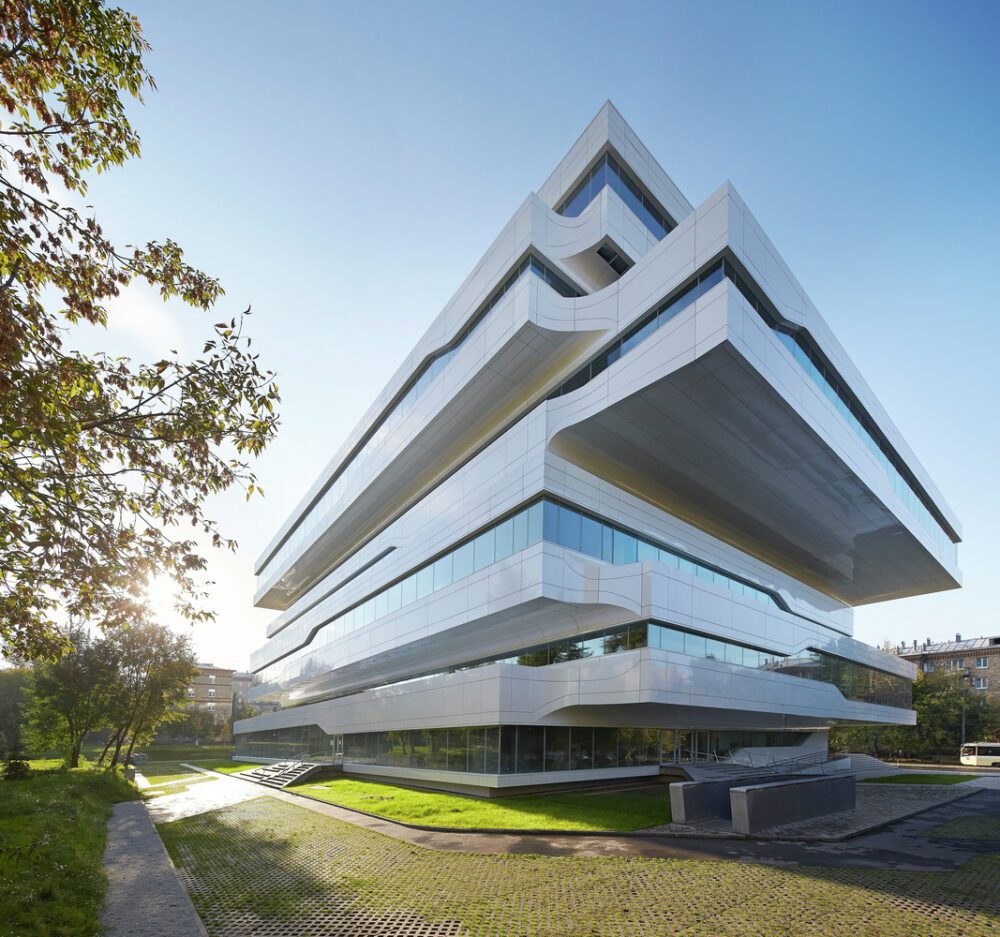The most famous architectural studios in the world

In the world of science, technology and art, renowned architectural studios offer groundbreaking design solutions that define the landscape of modern metropolises. Often with a long heritage and international reach, these prestigious design institutes set the standard for innovation, durability and functionality. Thanks to a holistic approach to design, the most famous architectural offices in the world create structures that harmonize harmoniously with the surrounding environment and community.
Their designs, often a response to complex urban challenges, reflect a deep commitment to research and development. This allows you to create spaces that promote sustainable development and the well-being of users. In today’s article we will present the most famous architectural studios in the world and we’ll take a closer look at how they define and redefine global architecture.
The most famous architectural studios in the world
In the space of global architecture, the most famous studios are those that are at the forefront of engineering thought and aesthetic vision. Their achievements are not just a matter of creating objects with a unique appearance. They are also the result of a deep understanding of the social, economic and ecological context.
Leading architectural offices have to their credit projects, which have become icons of modernity, influencing the way we think about architecture. Their works, often the result of interdisciplinary collaborations, exceed the limits of materials and forms, while responding to dynamic social needs. Their portfolio includes both spectacular skyscrapers and social projects, which together create a mosaic of contemporary design.

TOP 10 most famous architectural studios in the world
The most famous architectural studios in the world are distinguished by their integration of art with modernity and bold concepts. They transform urban landscapes and enrich spatial experiences.
- Gensler: Headquartered in San Francisco, California, Gensler is often ranked as the world’s leading architecture firm, with impressive revenues and a wide range of offices in 48 cities. Their reputation is built on projects such as Incheon International Airport in South Korea and the Shanghai Tower in China.
- Nikken Sekkei: It is a leading Japanese architectural firm, founded in 1900, that has completed over 25,000 projects. One of their most significant works is the Tokyo Skytree, the tallest television tower in the world.
- IBI Group: The Toronto-based company has been operating since 1974 and has a strong international presence with 60 offices. Their projects span a variety of sectors including healthcare, education and urban planning.
- RSP Architects: With over 50 years of experience, RSP Architects is based in Minneapolis. It serves a large global clientele including governments, educational institutions and healthcare organizations. Their significant projects include: Nakheel Mall in the UAE and The Oberoi in Gurgaon, India.
- AECOM: This is an American company offering services in the field of architecture, engineering design and construction management. It is one of the largest players on the global market, with projects in over 150 countries.
- Perkins+Will: This is an American architectural practice known for its focus on innovation and sustainability design. Perkins+Will’s portfolio includes a variety of projects, from schools and hospitals to high-rise office buildings and urban projects.
- HDR Architecture: This firm specializes in the design of healthcare facilities, science laboratories, and federal facilities. It is known for its approach focused on user needs. HDR Architecture is also a leader in sustainable design. It creates energy-efficient and environmentally friendly buildings, which translates into healthier and more productive spaces for communities.
Top 3 European architectural studios
- Foster + Partners: This is a British international architectural firm founded by Norman Foster in 1967. She is known for her modern approach to sustainable design, with many famous projects to her credit. These include the Willis Building in London, the Reichstag building in Berlin and the new Apple headquarters in Cupertino.
- BIG (Bjarke Ingels Group): This is a Danish architectural firm, founded by Bjarke Ingels in 2005. Known for its innovative approach to design, BIG combines pragmatic, economic and ecologically responsible solutions with sociological and urban analyzes. He creates architecture that is both functional and full of visual optimism. By introducing a fresh approach to traditional form and function in architecture, the group gained international recognition for its projects. They often set new standards for public, residential and commercial spaces.
- Zaha Hadid Architects: The company founded by the late Zaha Hadid, the first woman to receive the prestigious Pritzker Prize. Zaha Hadid Architects is famous for its futuristic and dynamic style. Her projects, such as the Heydar Aliyev Cultural Center in Baku or the London Aquatics Center, are recognizable all over the world.





Sustainable and ecological design in architecture
Sustainable and ecological design in architecture is not only a trend, but a necessity. It responds to the global challenges of climate change and environmental degradation. Sustainable architecture seeks to minimize the negative impact of buildings on the natural environment by saving resources and harmoniously integrating with the surroundings.
The key to sustainability design is a holistic approach that starts at the concept stage and extends throughout the entire building design cycle. Designers use innovative solutions such as energy-efficient systems, renewable energy sources and green roofs. These solutions not only reduce the carbon footprint, but can also bring benefits to users, for example through lower energy bills.
Effective water management, the use of local and sustainable materials, as well as the promotion of a healthy microclimate inside buildings are other pillars of sustainable architecture. Such buildings strengthen the relationship between people and the place they live in, creating spaces that are not only functional, but also inspiring.
However, true care for the environment requires more than just advanced technologies. It requires a change in thinking and values among both designers and users. Education and environmental awareness are key to promoting sustainable architecture.


What influence do culture and location have on the designs of architectural studios?
Culture and location are key factors shaping the vision and activities of the largest architectural studios. Local traditions, materials and socio-historical contexts are woven into the fabric of the projects, translating into a unique design and work philosophy. These studios often draw inspiration from the culture surrounding them. This allows them to create works of architecture that harmoniously coexist with the surroundings and reflect local heritage. In addition, geographical location influences the availability of materials, climatic conditions and user needs, which determines design methods and approaches to sustainable development.
Taking the example of Zaha Hadid Architects, the studio’s activities are characterized by fluidity of form and a futuristic approach that reflects the global, multicultural background of metropolises such as London. This studio, under the direction of Zahi Hadid, was known for creating buildings that became works of art art, as well as engineering feats that exceed the traditional boundaries of architecture.
Meanwhile, the architectural firm Perkins+Will, with deep roots in American architectural culture, focuses on a humanistic approach to design. It thus promotes sustainable development and healthy living environments. Their works often reflect the local context and are designed to maximize the use of natural resources and promote social inclusion.
In turn, the Danish company BIG, run by Bjarke Ingels, is an example of how Scandinavian aesthetics and pragmatism can be combined with innovative solutions. Their approach to design is strongly rooted in the local context. However, at the same time, it is open to global influences, which allows us to create universal solutions that respond to global challenges.
The most famous Architectural studios around the world stand out for their innovation and ability to create iconic and functional buildings. Culture and location not only influence the aesthetics and functionality of projects, but also shape the philosophy and work methods of architects, which translates into building valuable and lasting spaces for societies around the world.












Leave a Comment